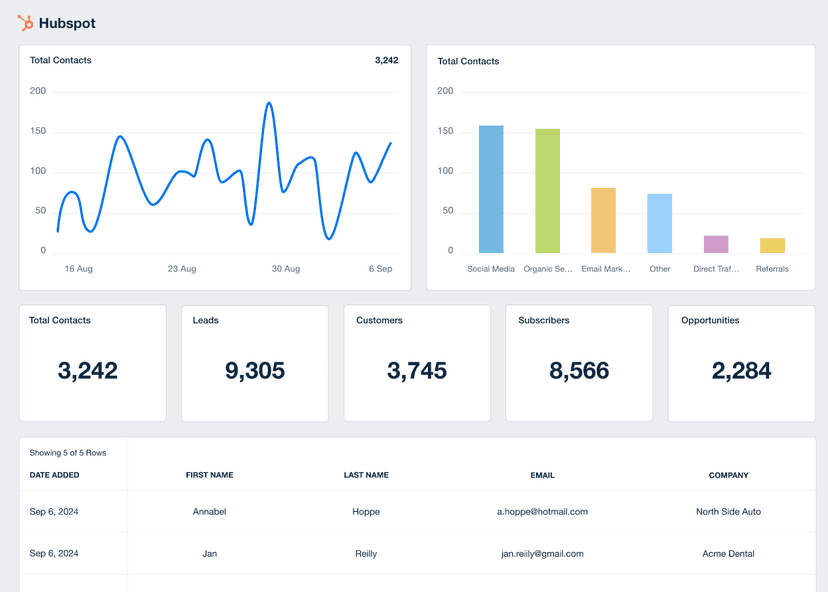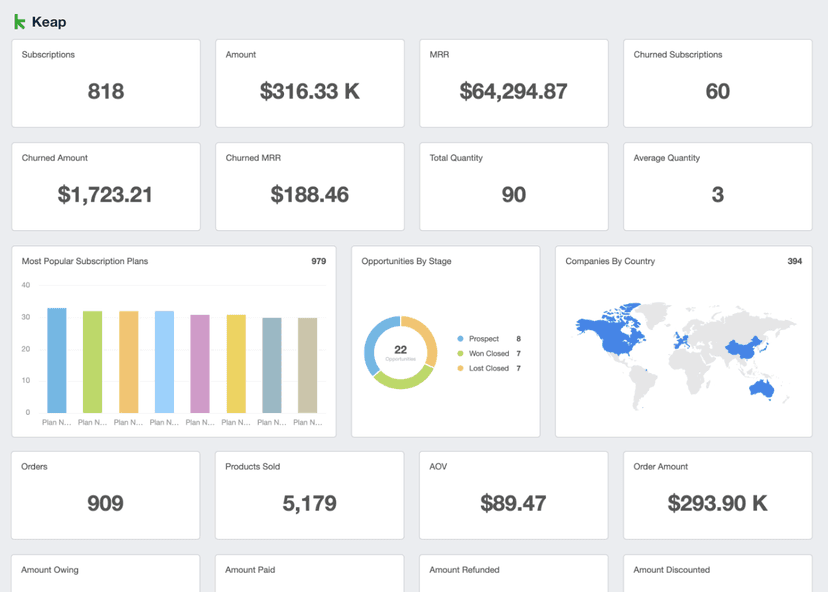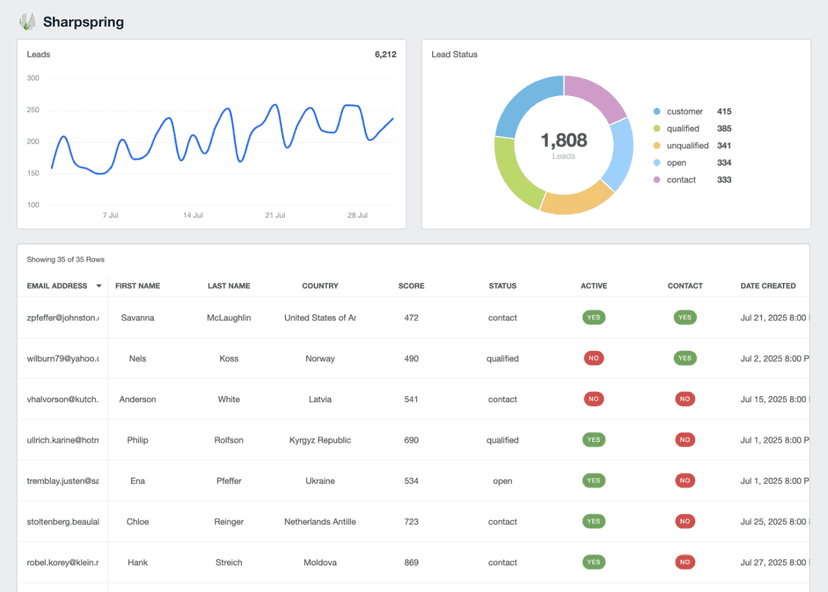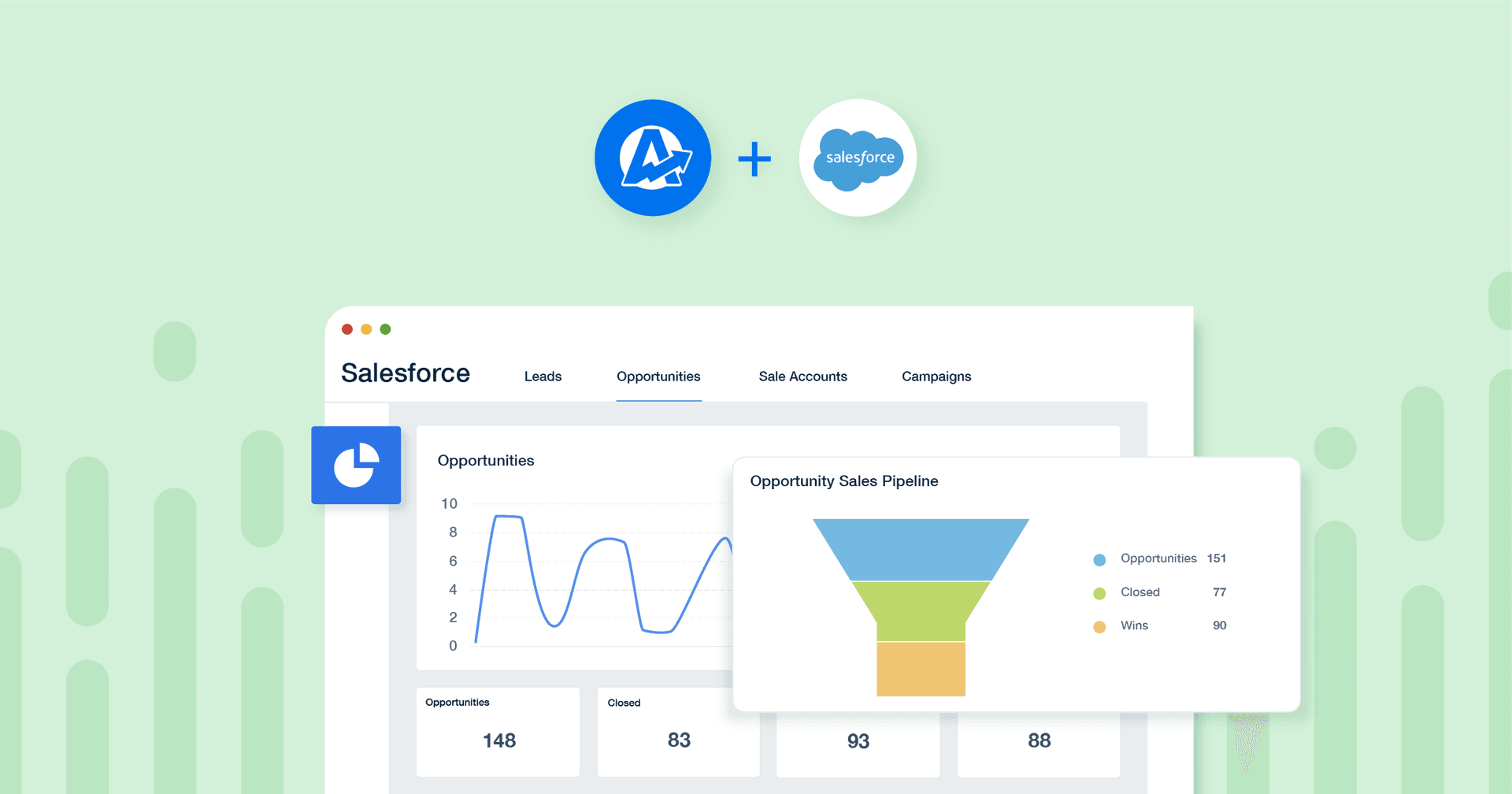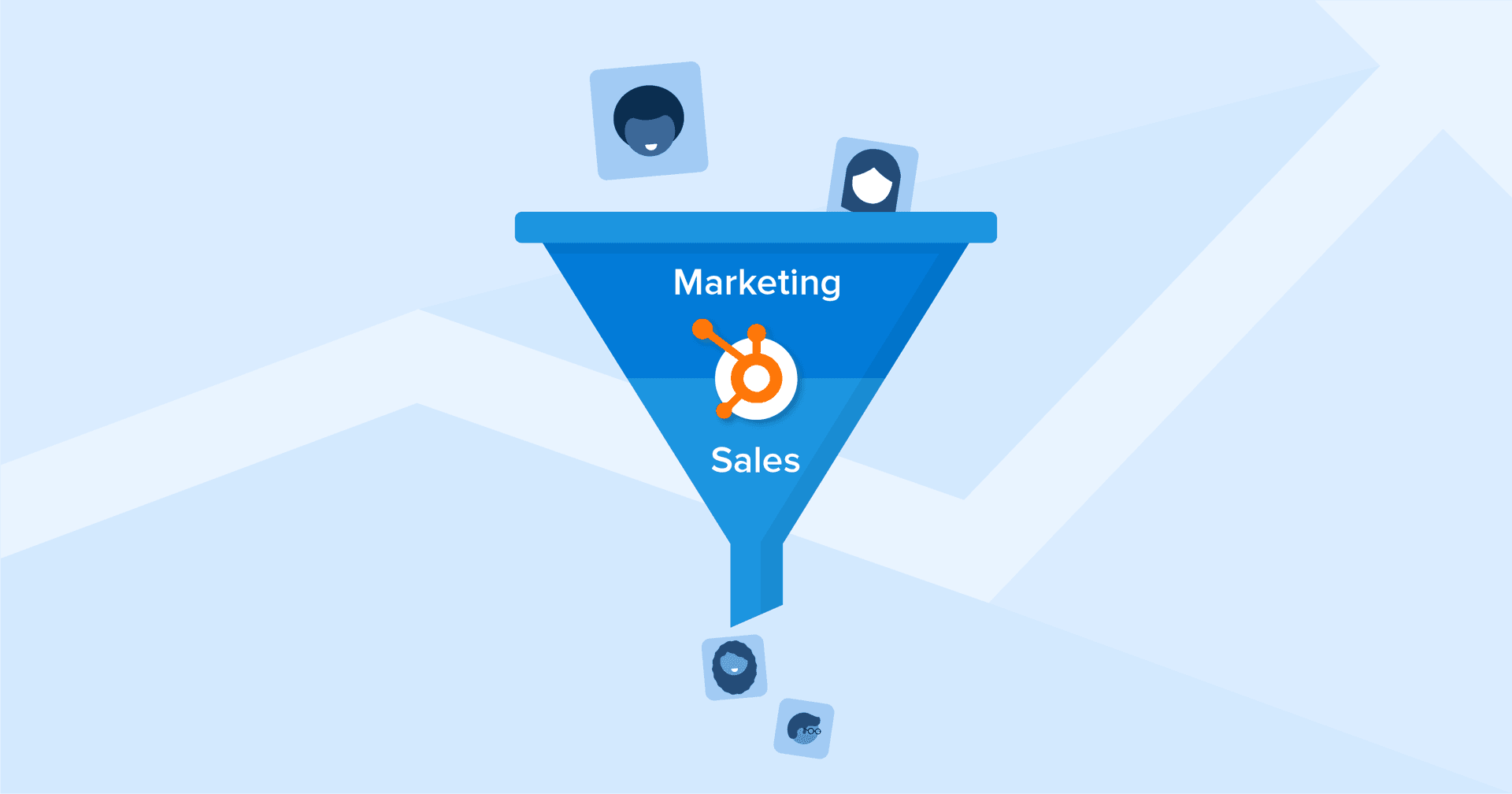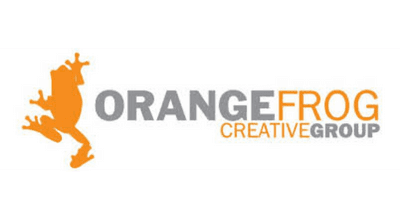MQL to SQL Conversion Rate
Track Progress
Gauge the effectiveness of lead nurture efforts by monitoring changes in the conversion rate over time.
Align Teams
Ensure marketing and sales teams coordinate closely to qualify leads efficiently, using shared data and insights.
Showcase Value
Highlight the conversion rate in reports to underscore the ROI of marketing strategies and campaigns.
Refine Targets
Adjust marketing tactics based on which leads are more likely to become SQLs, enhancing targeting precision.
Why MQL to SQL Conversion Rate Matters
The MQL to SQL Conversion Rate shines a light on how well marketing efforts attract quality leads and how effectively these leads are nurtured to become sales-ready. A high conversion rate from marketing to sales-qualified lead signals that marketing and sales are in sync, targeting the right audience with messages that resonate and moving them down the sales funnel.
Whether it’s refining the criteria for a sales-ready lead or enhancing lead nurturing tactics, understanding this metric leads to more efficient sales processes and higher revenue. This metric reflects the health of the sales funnel and a guide for strategic decisions across marketing and sales departments.

Stop Wasting Time on Reports. Get Marketing Insights Faster & Drive Results.
MQL to SQL Conversion Rate in the Bigger Picture
The journey from a marketing-qualified lead to a sales-qualified lead is a crucial phase in the sales and marketing funnel. When marketing efforts are finely tuned to generate a high volume of leads that are a good fit for the business, the quality of MQLs improves. This, in turn, makes it easier for sales teams to convert these MQLs into SQLs.
This conversion rate impacts other KPIs such as the acceptable Cost Per Lead (CPL), sales cycle length, customer acquisition cost, and ultimately, the return on investment (ROI) for marketing campaigns. A high MQL to SQL conversion rate suggests that marketing is successfully identifying leads ready and willing to engage with sales, thereby increasing efficiency and effectiveness across the board.
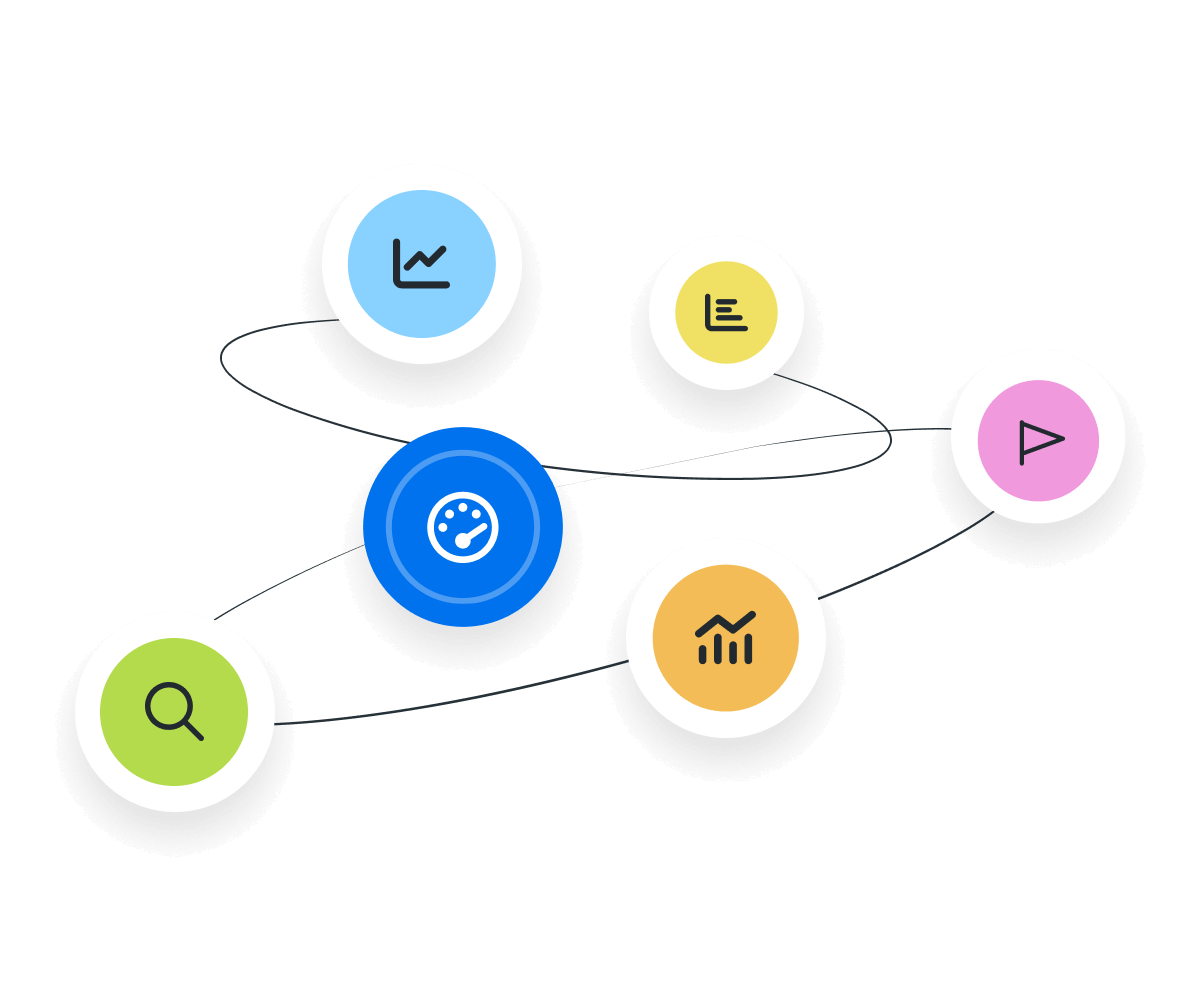
Key Factors that Impact Marketing Qualified Lead to Sales Qualified Lead Conversion Rates
The alignment between sales and marketing teams is pivotal. When both teams share a unified understanding of what qualifies a lead at each stage, the efficiency of the sales process improves. This alignment involves clear communication, shared goals, and mutual feedback mechanisms that allow for continuous refinement of criteria defining MQLs and SQLs.
The effectiveness of the marketing team's efforts in nurturing leads plays a significant role. Marketing initiatives must be designed to educate and engage potential customers, moving them smoothly along the buyer's journey. The content and messaging strategy should address the needs and pain points of leads, making them more receptive to sales conversations.
Similarly, the sales team's responsiveness and follow-up strategies are crucial. Prompt, personalized engagement with MQLs increases the likelihood of conversion to SQLs. The sales process must be adaptable, allowing sales professionals to tailor their approach based on the lead's behavior and preferences.

How To Calculate MQL to SQL Conversion Rate
To calculate the MQL to SQL conversion rate, divide the number of leads that become sales qualified by the total number of marketing qualified leads, then multiply by 100 to get the percentage. This simple formula gives a clear picture of how effective the marketing team is at generating leads ready for the sales team to take over.
MQL to SQL Conversion Rate Formula
What Is a Good MQL to SQL Conversion Rate?
As of 2023, industry benchmarks suggested that the average MQL to SQL conversion rate across all industries typically ranged from 10% to 20%. This rate signifies that a substantial portion of leads identified by marketing as potential customers are confirmed by sales as ready for engagement. Achieving or surpassing this benchmark indicates effective alignment between marketing and sales, efficient lead scoring, and strong lead nurturing practices.
What Is a Bad MQL to SQL Conversion Rate?
A bad average MQL to SQL conversion rate consistently falls below 10%. This low conversion rate suggests challenges in the marketing-to-sales handover process, possibly due to lower-quality leads, poor lead qualification processes, misalignment between marketing and sales teams, or inadequate lead nurturing. It signals the need for immediate review and improvement of lead management strategies to enhance conversion efficiency.
How To Set Lead Qualification Benchmarks and Goals
While industry averages provide a benchmark, the truth is that a "good" conversion rate varies widely depending on factors like industry, business model, and the complexity of the sales cycle.
A strong conversion rate indicates that the marketing and sales alignment is effective, with marketing efforts generating high-quality leads and the sales team successfully converting them. On the other hand, a lower rate may highlight areas for improvement in either lead quality, sales follow-up strategies, or both.
To set realistic benchmarks, companies should start by analyzing their own historical conversion data, looking for trends, patterns, and opportunities for improvement. This approach allows for setting specific, attainable goals tailored to the business's unique context. For instance, if historical data shows a conversion rate of 10%, aiming for a gradual improvement to 15% or 20% would be a realistic target.
Why MQL to SQL Conversion Rates Matter to Clients
For clients, this rate is a direct indicator of how well a marketing team or agency's efforts are paying off in terms of delivering high-quality leads that are genuinely interested in the product or service. It's evidence that the marketing strategies in place are not just generating a high volume of leads but attracting the right kind of leads with a real potential to convert into paying customers.
The MQL to SQL Conversion Rate also provides insight into the effectiveness of the lead scoring system. It highlights the precision with which leads are evaluated and categorized, ensuring that the sales team's time and resources are focused on leads with the highest likelihood of conversion.

Why MQL to SQL Conversion Rates Matter to Agencies
For agencies, the MQL to SQL Conversion Rate showcases how effectively potential leads become sales-ready, making it a beacon that guides top-of-funnel lead generation activities, reshaping the campaigns that are used to attract and nurture prospects.
Analyzing this conversion rate thoughtfully reveals much about the quality of leads generated at the top of the funnel. If the rate is low, it suggests that the initial lead generation efforts are casting too wide a net, bringing in leads that are not a good fit for the business. On the other hand, a high conversion rate indicates that marketing efforts are well-targeted, attracting genuinely interested prospects ready to engage further.

Enhancing MQL to SQL Conversion Rate
To truly grasp and improve the MQL to SQL Conversion Rate, it's crucial to understand the nuances contributing to effective lead conversion. First, analyzing historical data plays a pivotal role. By examining past performance, a business can identify patterns, such as periods of high efficiency or potential bottlenecks. This analysis helps set realistic yet ambitious benchmarks tailored to the business's unique context and goals. Always remember that what works for one sector or business model might not translate directly to another due to differences in sales cycles, product complexity, and customer behavior.
To further refine the MQL to SQL Conversion Rate, consider the impact of various marketing strategies and sales processes. For instance, shifting marketing tactics or introducing a new sales tool can significantly affect conversion rates. Regularly review and adjust these strategies to ensure that marketing and sales efforts remain aligned and focused on the same objectives.
Automatically Pull Data From 80+ Marketing Platforms To Create Client Reports in Minutes.
Best Practices When Analyzing and Reporting on MQL to SQL Conversion Rates
An in-depth analysis of the MQL to SQL Conversion Rate sheds light on the effectiveness of marketing and sales strategies, the health of lead generation activities, and how efficiently the sales pipeline converts high-quality leads.
Ensure Data Accuracy
Reliable data forms the backbone of any analysis, ensuring that decisions are based on facts, not assumptions. This means regularly cleaning and updating CRM data and ensuring that the criteria for MQLs and SQLs are clearly defined and consistently applied.
Analyze Over Time
Examine the conversion rate over time to uncover insights into trends, patterns, seasonal variations, the impact of specific marketing campaigns, or changes in the sales process that have influenced this rate.
Compare Across Channels and Campaigns
Identify which marketing channels and campaigns are most effective at generating quality leads. Use these insights to allocate resources more efficiently, focusing on high-performing channels and optimizing or reevaluating underperforming ones.
Segment the Sales Pipeline
Measure the conversion rate across different segments of the sales pipeline. This granular analysis reveals specific stages where leads tend to stall or drop off, providing targeted opportunities for intervention and improvement.
Align to Client Goals
Align this metric with business growth goals to ensure that analysis and reporting are directly tied to strategic objectives.
Visualize Performance
Use visually appealing dashboards and reports to make the data accessible and actionable. Clear, intuitive visualizations help communicate complex information effectively, enabling stakeholders to grasp key insights at a glance.
FAQs About Tracking and Improving MQL to SQL Conversion Rate
The MQL to SQL conversion rate is a critical metric for sales performance and overall business growth. These FAQs explain what it means, why it matters, and how agencies can help clients nurture leads and align marketing with sales.
MQL to SQL conversion measures the percentage of marketing leads that qualify as Sales Qualified Leads after initial contact or further nurturing processes. It reflects how well the lead generation process and marketing messaging target the ideal buyer persona, moving potential customers closer to closing deals.
A Sales Qualified Lead (SQL) meets specific lead qualification criteria such as buyer persona match, job title, or buyer behavior that indicates readiness for the conversion process. A Sales Accepted Lead (SAL) is a marketing lead that a sales development rep has reviewed and accepted into the sales funnel.
Product Qualified Leads (PQLs) are potential customers who show strong buying intent through direct product usage—for example, signing up for a free trial or engaging with key features in a SaaS business. Unlike Marketing Qualified Leads (MQLs), which are based on marketing engagement, or Sales Qualified Leads (SQLs), which meet lead qualification criteria, PQLs are identified through real product interactions. Agencies that track PQLs alongside MQL to SQL conversion rates gain a better understanding of buyer behavior and can help SaaS clients accelerate revenue growth by focusing on leads most likely to convert into paying customers.
The average conversion rate for MQL to SQL varies by industry and target market. Agencies often compare performance against SQL conversion rate benchmarks based on historical data and other clients to ensure they’re on the right track. While benchmarks vary, consistently improving SQL conversion rate is key to driving sales performance and overall business growth.
Tracking SQL conversion rates is important because it provides a conversion rate benchmark for how effectively marketing campaigns turn potential customers into qualified opportunities. It helps agencies and clients identify gaps in the lead generation process, evaluate marketing alignment with sales, and demonstrate revenue growth by moving more leads through the sales pipeline.
To improve SQL conversion rates, agencies should:
Define clear lead qualification criteria aligned with the ideal buyer persona.
Refine marketing messaging and content marketing to nurture leads effectively.
Use actionable strategies like targeted social media ads and success stories to attract more qualified leads.
Strengthen alignment between marketing teams and sales reps for smoother hand-offs.
Continuously test nurturing processes and adapt to buyer journey changes for higher SQL conversion rates.
Salesforce Dashboard Example
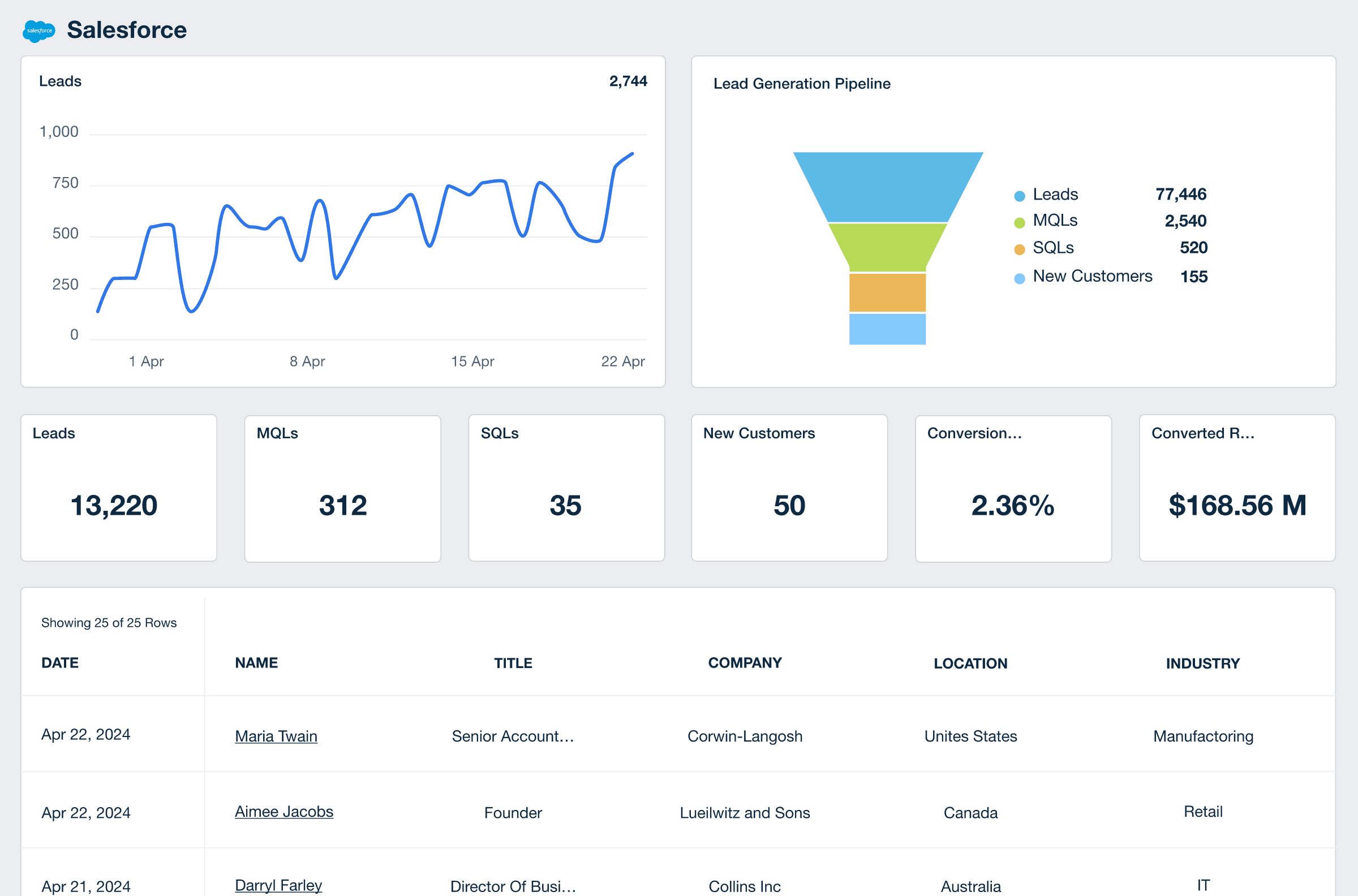
Related Integrations
How To Improve the MQL to SQL Conversion Rate
Improving the conversion rate from marketing-qualified leads to sales-qualified leads makes the most of marketing and sales efforts. Here are three actionable tips to help enhance this process.
Refine Lead Scoring
Adjust lead scoring criteria to better reflect the qualities of leads that successfully convert to SQLs. This involves analyzing past conversions to identify common characteristics and behaviors of leads that become customers.
Align Sales and Marketing Teams
Ensure that both teams have a shared understanding of what qualifies as an MQL and an SQL. Regular meetings to discuss lead quality and conversion success help maintain this alignment.
Enhance Lead Nurture Streams
Develop targeted content and communication strategies for different stages of the lead funnel. Personalized emails, informative content, and timely follow-ups increase the chances of conversion.
Related Blog Posts
See how 7,000+ marketing agencies help clients win
Free 14-day trial. No credit card required.


